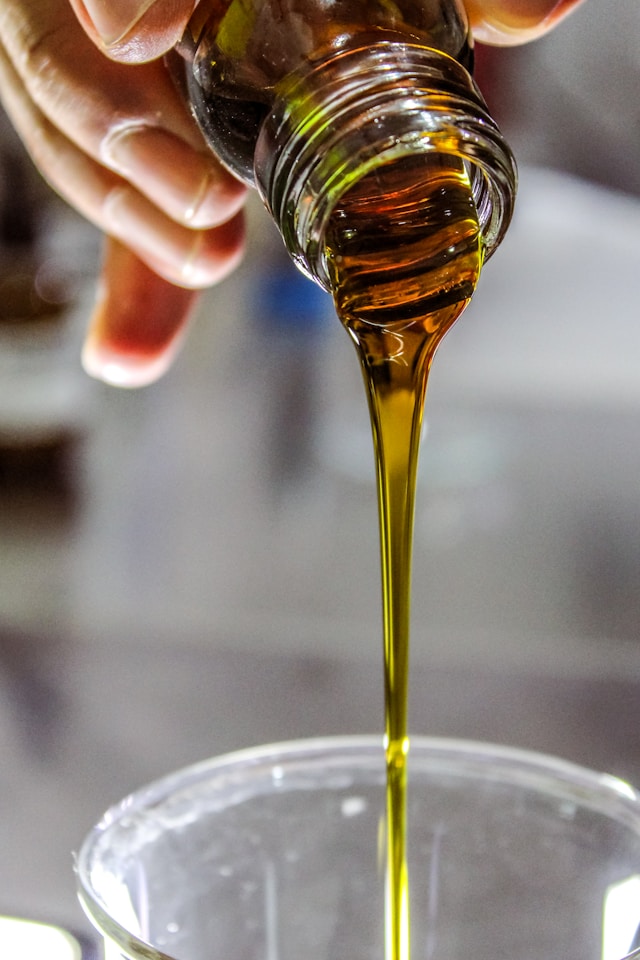In the world of natural skincare and aromatherapy, one of the most common confusions is between carrier oils and essential oils. They both come from plants, they both smell “botanical,” and they both appear in beautiful little bottles… so students often mix them up.
But the truth is:
they couldn’t be more different — and mixing them up can be dangerous.
Let’s break it down in the simplest, quickest way so beginners always know what they’re using, and why.
🌿 **What Are Carrier Oils?
(Plant Oils, Vegetable Oils, Base Oils)**
Carrier oils are the fatty oils that come from nuts, seeds, kernels, or fruit flesh.
Think:
- Sweet almond oil
- Jojoba oil
- Olive oil
- Rosehip oil
- Coconut, Argan, Avocado, Grapeseed…
Key traits of carrier oils:
- Oily, fatty, rich
- They feel nourishing on the skin
- They do not evaporate
- Their scent is mild to almost neutral
- They can be used directly on the skin
- They dilute or “carry” essential oils — hence the name
How they’re extracted:
By cold-pressing or expeller pressing seeds, nuts, or fruits.
What they do:
- Moisturise
- Nourish the skin barrier
- Provide fatty acids, vitamins, antioxidants
- Create the base of many skincare formulas
🌸 **What Are Essential Oils?
(Aromatic, Volatile Plant Extracts)**
Essential oils are highly concentrated aromatic extracts from flowers, leaves, bark, roots, peels, or resins.
Think:
- Lavender
- Eucalyptus
- Rosemary
- Tea tree
- Ylang-ylang
- Frankincense
- Lemon, Sweet orange…
Key traits of essential oils:
- Not oily — they are not fats
- Highly volatile — they evaporate fast
- Very strong smell
- Cannot be used pure on the skin (can burn or irritate)
- Require dilution in a carrier oil or cosmetic base
- Potent therapeutic and aromatic actions
How they’re extracted:
- Steam distillation (herbs, flowers)
- Cold expression (citrus peels)
- CO₂ extraction (modern method)
- Solvent extraction (absolutes)
What they do:
- Influence mood and emotions
- Support skin issues
- Add scent to formulations
- Provide antimicrobial, anti-inflammatory or calming effects (depending on the oil)
Why the Confusion?
Because:
- Both come from plants
- Both are sold in similar dropper bottles
- The word “oil” appears on both
- Beginners assume anything “natural” is automatically safe
But the main difference is:
👉 Carrier oils nourish.
👉 Essential oils treat or aromatise — and must be used in tiny, controlled amounts.
⚠️ Why Mixing Them Up Can Be Dangerous
Using essential oils like carrier oils can lead to:
- Burning
- Irritation
- Allergic reactions
- Sensitisation (long-term intolerance that doesn’t go away)
- Phototoxicity (citrus oils reacting with sun)
For example:
Putting pure lavender, tea tree, or lemon oil directly onto skin is not safe — even if influencers say so.
This is where good training matters.
🌱 The Quick Trick to Tell Them Apart (Beginner-Friendly Test)
You can teach your students these super easy identification checks:
1. The Finger Test (Immediate Clue)
- Put one drop on a fingertip.
- Carrier oil feels greasy, oily, nourishing.
- Essential oil feels almost dry, evaporates quickly.
2. The Blotting Paper Test
Place a drop on paper:
- Carrier oil makes an oily translucent stain that remains.
- Essential oil evaporates within minutes leaving no oily mark (maybe a faint ring at most).
3. The Scent Test
- Carrier oils smell soft, neutral, earthy.
- Essential oils smell intense, aromatic, sometimes overpowering.
4. Labelling Clues (Easy Quick Scan)
Carrier oils often say:
- cold-pressed
- virgin
- vegetable oil
- seed oil
Essential oils always state:
- 100% pure essential oil
- steam distilled / expressed
- INCI ends with oil but from a plant part like Lavandula angustifolia oil
5. Solubility Clue in Formulation
- Carrier oils mix with other oils.
- Essential oils need carrier oils to be dispersed safely.
- Essential oils do not dissolve in water — ever.
Your students can remember it like this:
👉 Carrier = fatty
👉 Essential = fragrant
Simple and fool-proof.
🌟 How Beginners Should Use Them (Safe Practice)
Carrier Oils
✔️ Safe to apply directly
✔️ Great for massage, moisturising, cleansing balms
✔️ Perfect base for dilution
Essential Oils
❗ Always dilute (0.25%–2% depending on use and safety)
❗ Never use on babies, broken skin, or near eyes
❗ Follow IFRA guidelines for each oil
✨ Final Message
Natural does not mean harmless.
Understanding the difference between carrier oils and essential oils is one of the first steps toward safe and confident formulation — and once they master this, everything else in cosmetic formulation becomes much easier.
Cheers,
La Mayca x
